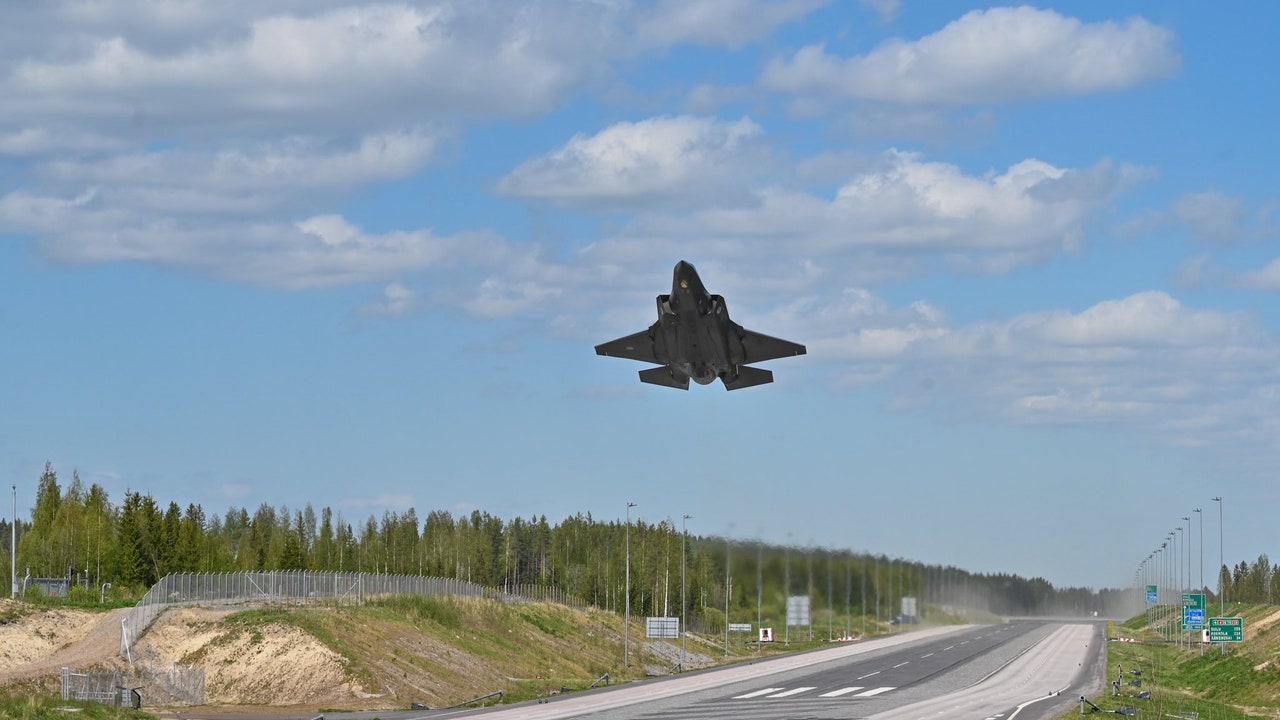
NATO teaches its pilots to take off from highways to a hypothetical Russian attack
- Matthew Clark
- 0
- Posted on
NATO has taken a twist to its immediate response plan before A hypothetical attack by Russia and has begun to train the pilots of their fighters so that they can land and take off in the Nordic highways closest to the border. With this, it would be possible to reduce reaction time to an aggression.
The maneuvers, included in the agile combat employment tactics (ACE), have been baptized as “Baana exercise“Since they have been carried out in a section of the Baana road, in Finland, a few kilometers from the border with Russia. It is the first time they are carried out.
Similar exercises were also carried out on highways from Sweden, with the will that they are not an isolated defense device, but something that can be incorporated immediately into the operation without the need for prior training.
The agile combat employment exercises are those provided by NATO to deploy in the defense of Europe before any confrontation of article 5, considered The fundamental pillar of the collective defense of the Alliance. It establishes that an armed attack against one or several NATO member countries in Europe or North America will be considered an attack against all allies, and that each of them will have the right and duty to help the country or countries attacked, using the armed force if necessary.
The maneuvers were carried out the last week of May, and had the participation of more than 20 allied aircraft and almost 2,000 recruits, Reservists and active personnel, according to the information provided by NATO.
Finnish combat aircraft F/A-18 Hornet, Hawk training aircraft and other types of aircraft operated from a section of Highway 4, or European Route E75, near the Tikkakoski air base in Jyväskylä.
The Royal Air Force of the Netherlands also participated for the first time In the Baana exercise, with F-35a Lightning II Dutch making landings and take-off on the highway, and rehearsing dispersed flight operations. In addition, the Dutch F-35a were integrated with the F/A-18 Finnish Hornet during their deployment in Finland, which reinforced cooperation between the allied fighters of fourth and fifth generation.
Exercise is part of the Finland mobile combat concept, Designed to ensure that aircraft can operate from remote terrestrial bases if conventional clues are compromised, NATO explains. Road operations have been a usual feature of Finnish military training since the 1960s, providing valuable experience and instruction to the alliance approach to ACE.
“The preparation to operate from a network of dispersed bases is part of the concept of mobile combat of the Finnish Air Force, and operating on highway tracks is part of the flight training of all Finnish combat pilots,” says Colonel Tomi Böhm, deputy chief of the Finnish Air Force General Staff.
Meanwhile, in Sweden, C-130 Hercules aircraft of the Swedish and Norwegian Air Forces, and the unit of the Binational Air Transport Squad (Bats) of Germany and France They made short lands on closed tracks. The training focused on training flight crews to take off and recover aircraft from temporary and austere tracks.
These exercises underline NATO’s commitment to ACE: an operational approach that promotes the rapid movement and redflow of forces to hinder the selection of adversary objectives and increase operational resistance. When operating from unexpected locations and strengthening regional ties, allied forces improve their deterrence and preparation.
“The oil is a key capacity that we would use to defend Europe in any confrontation protected by article 5,” said the Marshal of the air Johnny Stringer, subcomandante of the NATO ally air control, about the importance of ACE in the modern war. “The Ace meets the air forces throughout the alliance and operates them from various air bases, which guarantees credibility and capacities that support our deterrence strategy.”
Maylands and Swedes of May demonstrate NATO’s collective capacity to adapt and respond quickly to emerging threats.